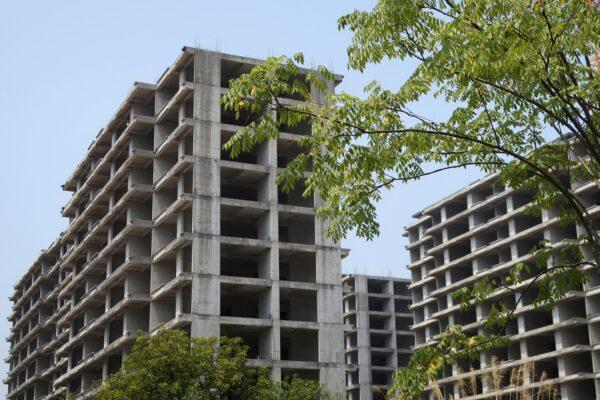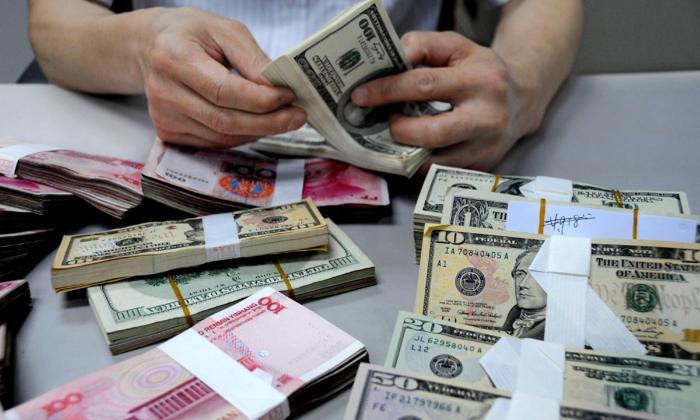The latest data from China shows considerable local government debts have grown faster than GDP. Given the opacity of the Chinese Communist Party’s (CCP) official data, it is likely that local government debt is much worse than reported.
China’s frequent COVID-19 outbreaks in 2022 have led to production stagnation and economic recession. Pillar industries such as real estate continued to decline. And the “zero-COVID” policy and frequency of COVID-19 nucleic acid testing led to a huge increase in local authorities’ spending and piled-up debts.
According to the latest data from the CCP authorities, outstanding local government debt stood at 35 trillion yuan ($4.9 trillion) at the end of November 2022, up 15 percent from 30.5 trillion yuan ($4.26 trillion) at the end of 2021; That’s up 16 percent from 30.2 trillion yuan ($4.2 trillion) in November 2021, far outpacing the 3 percent GDP growth in 2022.
In the first 11 months of 2022, the principal repayment due on the local governments’ bonds amounted to $2.71 trillion yuan ($378.5 billion), with interest payments exceeding 1 trillion yuan ($140 billion).
From January to November 2022, the revenue of many Chinese provinces (municipalities) declined year-on-year, while expenditure increased significantly. As a result, the revenue of local governments far exceeded the expenditure.
Public data show that from January to November 2022, local governments’ general public budget revenue was nearly 10 trillion yuan ($1.4 trillion), down 3 percent year-on-year. Local public budget spending, on the contrary, reached 19.6 trillion yuan ($2.73 trillion), up 6.2 percent.
In addition, the budget revenue of local government-managed funds was 5.6 trillion yuan ($782 billion), down 23 percent year-on-year. Yet expenditures related to the budgets of local government-managed funds reached 9.2 trillion yuan ($1.28 trillion), up 3.7 percent.
Among local governments’ major expenditures in 2022, health spending saw the biggest increase, up 15.3 percent year-on-year. It was followed by spending on social security and employment, which rose 7.4 percent.
Meanwhile, real estate, the main source of local government finance, continues to decline.

In 2022, China’s property developers showed a low willingness to acquire land, with the total land purchased in the first ten months of 2022 down 53 percent year-on-year. The value of land transactions also fell 47 percent.
From January to November 2022, deed taxes, a component of land and property-related taxes, fell by 24 percent year-on-year. Land value-added tax fell by 9 percent.
Commercial housing sales have also fallen sharply. From January to October 2022, the total area of commercial properties sold in China decreased by 22 percent year-on-year, and the sales volume decreased by 26 percent.
Wealthy Provinces Saw Revenue Fall
In the first three quarters of 2022, general public budget revenue in 26 of China’s 31 provinces (municipalities), including many economically important ones, fell year-on-year. Among them, Guangdong saw a year-on-year decline of 8.6 percent; Jiangsu Province saw a decline of 11 percent; In Zhejiang Province, revenue fell 5.3 percent; Revenues in Shanghai and Chongqing were down 12 percent, respectively.Shanghai authorities implemented a strict “zero-COVID” policy in the second quarter of 2022, which affected the production and operation of most enterprises in the city, resulting in a 20 percent year-on-year decrease in fiscal revenue in the first half of 2022. Meanwhile, rounds and rounds of nucleic acid testing for all personnel and strict pandemic prevention measures resulted in Shanghai’s expenses exceeding revenues in the first half of 2022.
In Beijing, the cumulative fiscal deficit of general public budget revenue from January to November of 2022 was 120.2 billion yuan ($16.8 billion). Among them, to implement epidemic prevention and control and regular nucleic acid testing, health expenditure increased by 20 percent year-on-year.
In the first eight months of 2022, Zhejiang Province had a fiscal deficit of 162.5 billion yuan ($26.7 billion). Its health spending increased 40 percent year-on-year.
For the whole of 2022, Guangdong Province’s annual general public budget expenditure reached 1.85 trillion yuan ($258.4 billion), with a fiscal deficit of 520 billion yuan ($72.6 billion).






Friends Read Free